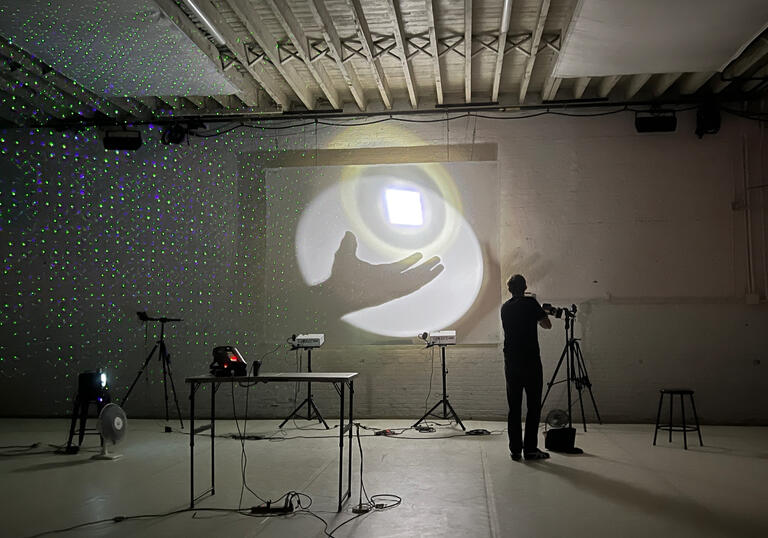
Company
Related events
About the performance
THAT uses light and video technology as abstract puppetry.
THIS investigates hand shadows.
THAT paints with light and imagines the universe.
THIS is about the people in it, their romantic sense of longing, loss and alienation.
THAT uses cameras, projectors and tripods that come to life;
zooming in and out, manoeuvring visual feedback loops, dissolving images together
and apart – creating an abstract video puppetry right in front of our eyes.
THIS tells stories about loss and love. A cowboy sleeps under the stars, a family puts their child to sleep for the night, a crooner serenades his lover, a jazz pianist fantasises while he plays.
THAT is inspired by Basil Twist’s Symphony Fantastique.
THIS brings to life characters inspired by the sculptures of Henri Moore.
A process of discovery
We are committed to discovering what we don’t yet know about something. To that end, we engage in extended research and development. Each rehearsal starts from a blank page (metaphorically speaking). We investigate something – an object, process or convention – without knowing where we are going or where we will end up. We have the faith and confidence that we will stumble upon something interesting along the way.
We’re swimming in technology in our daily lives. Consequently, we use technology to build our work. We don’t, however, use the technology in the way it was intended. For example, we might attach a homemade contact mic to a tensor lamp. The lamp then transforms from a light source to something musical – and something mysterious.
We are committed to discovering and using what we call the ‘facts’ in the space. We are not trying to hide the truth of any object, process or space. We acknowledge their truth. And by doing so, we explore the honest transformations possible when we create work by juxtaposing the facts as they are.
We avoid slickness by rediscovering the poetry in simple objects.
We are interested in creating new forms by combining and juxtaposing familiar forms.
We believe in what John Cage calls ‘purposeful purposelessness’. Our work does not have to be useful politically or socially – just playful and naive; curious and full of wonder. Useless art is very useful.
Phil Soltanoff and Steven Wendt

